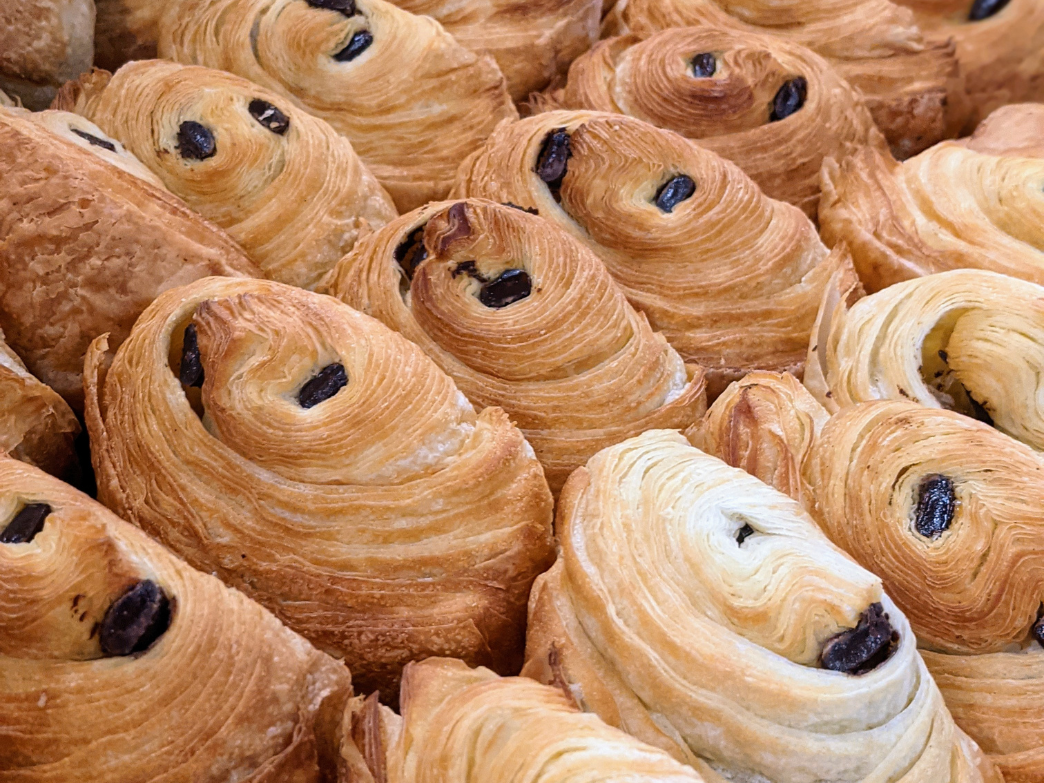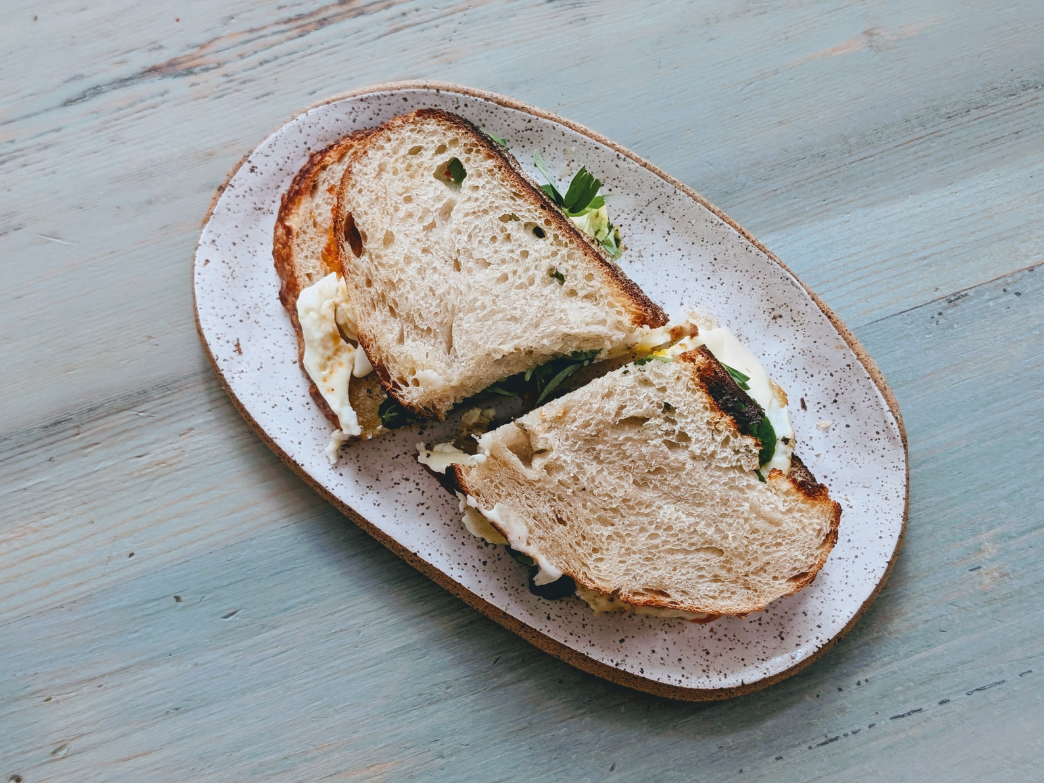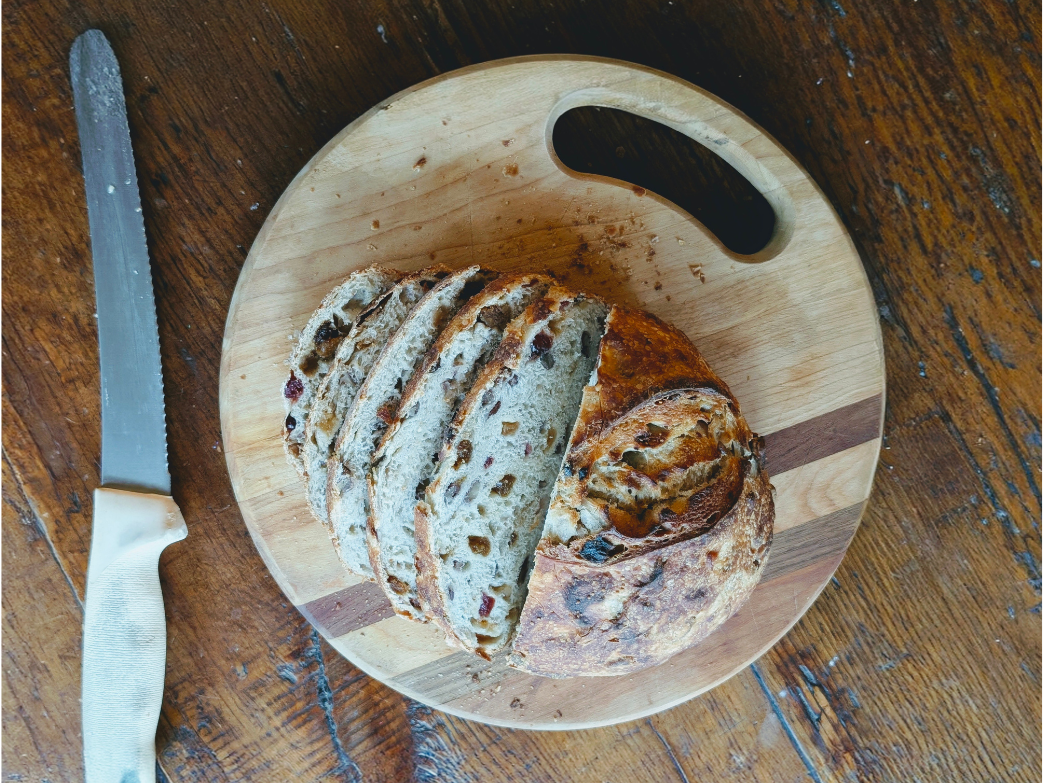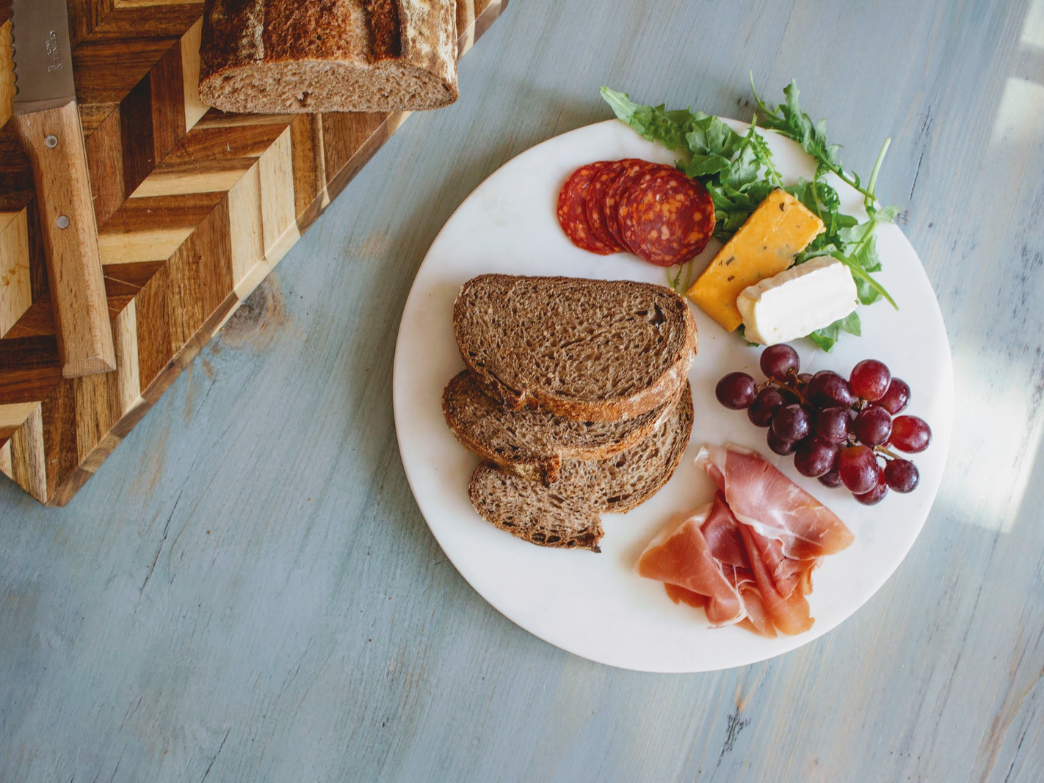By Pilar Tackie-Codjoe, MS
Wildgrain, opens in a new tab is the first bake-from-frozen subscription box for sourdough breads, fresh pastas, and artisanal pastries.
What is a chocolate croissant? What are chocolate croissants made of?
A chocolate croissant, also known as a "pain au chocolat," is a type of pastry that is made from layers of buttery, flaky dough shaped into a rectangle and filled with chocolate. The dough used for chocolate croissants is similar to traditional croissants, with the addition of melted chocolate.
How do you make chocolate croissants?
Chocolate croissant dough is made from flour, sugar, salt, yeast, and butter. To make chocolate croissants, the pastry dough is rolled out and spread with butter, then folded and rolled out again. This process, known as "lamination," creates layers of butter and dough that give the chocolate croissant its flaky texture. The croissant dough is then cut into rectangular shapes filled with chocolate and baked until golden brown and flaky.
What is pain au chocolat? Why do people call pain au chocolat as chocolate croissants?
"Pain au chocolat" is the French name for chocolate croissants. "Pain" means "bread" in French, and "au chocolat" means "with chocolate." So, "pain au chocolat" literally means "bread with chocolate." The term "chocolate croissant" is used in English to refer to the same pastry as "pain au chocolat." Both terms refer to a rectangular, chocolate-filled pastry made from layers of buttery, flaky dough.
What’s the difference between regular croissants vs. pain au chocolat?
Croissants and pain au chocolat are similar multi-layer, buttery pastries. The main differences between regular croissants and pain au chocolat are the filling and the shape.
Croissants are a traditional French pastry; croissant dough is made from flour, yeast, sugar, salt, and butter. The dough is rolled out and spread with butter, then folded and rolled out in a multi-step technique called "lamination." The layering of butter and dough give the traditional croissant its classic flaky texture.
Pain au chocolat, on the other hand, is a type of pastry that is made from the same dough as a regular croissant, but with the addition of chocolate inside. The dough is rolled out and spread with butter, then cut into rectangular shapes and filled with chocolate before being baked. Pain au chocolat is similar in texture to a traditional croissant, but with a chocolate filling and a rectangular shape.
What is a chocolatine? What’s the difference between pain au chocolat vs. chocolatine?
A chocolatine is a French pastry that is similar to a pain au chocolat, but with a few differences in the way it is made. Like a pain au chocolat, a chocolatine is made from many layers of buttery, flaky dough that is filled with chocolate.
The main difference between a chocolatine and a pain au chocolat is the type of dough used. A chocolatine is made with a dough that is slightly sweeter and richer than the dough used for a pain au chocolat. The dough for a chocolatine is made from flour, sugar, butter, eggs, and milk, and is often flavored with vanilla or orange zest.
Another difference between the two pastries is the way the dough is shaped. While a pain au chocolat is made by rolling out the dough and spreading it with butter before cutting it and filling it with chocolate, a chocolatine is made by folding the dough over the chocolate filling and sealing it before baking. This creates a slightly different texture and shape compared to a pain au chocolat.
What’s the difference between chocolate croissant vs. pain au chocolat vs. chocolatine?
Chocolate croissants, pain au chocolat, and chocolatines are all chocolate filled pastries that are made with several layers of flaky, buttery dough. While they are similar in many ways, there are a few key differences between chocolatine, pain au chocolat and chocolate croissant.
Chocolate croissants and pain au chocolat are the same pastry; “pain au chocolat” is the French name for chocolate croissants. They are made from the same pastry dough as traditional croissants, but with the addition of chocolate inside and baked in a rectangular shape.
A chocolatine is also a French pastry that is similar to a pain au chocolat, but with a few differences in the way it is made. The dough for a chocolatine is richer and slightly sweeter than the pain au chocolat dough, and is often flavored with additional vanilla or orange zest. A chocolatine is also shaped differently than a pain au chocolat.
Is the pastry in croissants the same as in pain au chocolat (chocolate croissants)?
Yes, the pastry used in croissants and pain au chocolat (also known as chocolate croissants) is the same. Both pastries are made from a dough of flour, yeast, sugar, salt, and butter. Pain au chocolat (chocolate croissants) have chocolate added to the pastry, while regular croissants have no added filing.
Where can I buy the best chocolate croissants online?
At Wildgrain, we specialize in making high-quality, fresh baked goods that are delivered directly to your door. Wildgrain is the first bake-from-frozen delivery subscription service for breads, pastries, and fresh pastas. Some of our best baked goods include croissants and chocolate croissants. Learn more about Wildgrain and our artisanal baking and cooking methods.
About the Author
Pilar Tackie-Codjoe is a qualified school nutrition supervisor with a Master's degree in Nutrition and over five years of experience in the field. Under her leadership, school lunch programs have seen a significant increase in the variety and quality of food options, leading to improved student health and academic performance.



